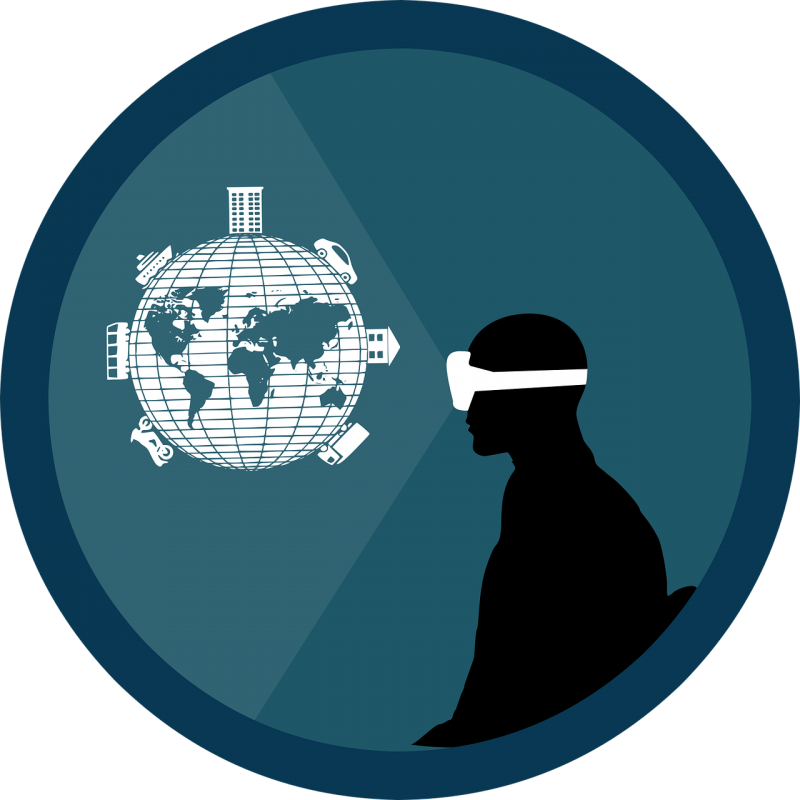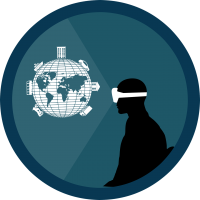Enhancing Learning Outcomes with Virtual Reality


By Steve Wells, Rohit Talwar, Alexandra Whittington, Helena Calle, and April Koury
How might virtual reality impact work and learning in the near future?
Virtual Reality Enters the Learning Space
Virtual reality (VR) is one of the major contemporary technologies being implemented in teaching today with emerging examples that hint at how it could play a role in the future of education. As one of the key experiential technology innovations that has gathered significant attention, current examples of VR in the marketplace include HTC’s Vive, Oculus Rift, and SteamVR. As a consumer product, VR is a seemingly magical form of entertainment made possible by emerging technology. The nature of VR changes the way people interact with digital information, including data, knowledge, and alternative scenarios. The many potential benefits of VR in teaching are only beginning to show through.
One of the biggest challenges in education and training is ensuring that whatever is being taught meets the audience’s learning needs. In today’s complex and fast-paced society, where new discoveries and technologies emerge regularly, learning needs can also change rapidly. In response to these challenges, tools like VR can help educators adapt and refine solutions quickly. This is just the latest instance of innovative consumer electronics tools being employed in teaching—past examples include the internet, social media, mobile phones, and video games.
Emerging Educational Applications
The VR experience allows people to interact with others in a simulated scenario at different and increasingly multi-sensory levels. Educators have found information retention improves when the individual is engaged in such diverse multi-level experiences. Example classroom applications of VR include:
- Visualizing inherently abstract concepts in physics, engineering, mathematics, chemistry, and biology such as exploring geometric shapes in 3D, following signals through the nervous system, and seeing the behavior of physical structures under different loads and environmental conditions.
- Exploring scenarios that are difficult or dangerous to recreate in the classroom, such as the impact of combining hazardous chemicals, the behavior of the heart during a cardiac arrest, and monitoring lava flows and temperatures in an erupting volcano.
- Creating virtual realities that help bring to life aspects of the curricula and learning objectives in a more engaging manner. For example, traveling virtually to a scenario that brings to life the major facts and details of the history of pre-Hispanic cultures or the different conversations and tensions that led to past wars.
- Enabling students with special needs to experiment with different learning strategies that do not rely on passive listening or reading. For example, learners with attention deficit, hyperactivity, and dyslexia could potentially learn more effectively through experimentation in virtual contexts.
The Workplace Opportunity
There are also a range of possible VR applications in the work environment:
- Demonstrating architectural models and testing factors such as human behaviors during emergencies.
- Advanced multi-sensory simulation of complex and dangerous tasks and activities, encompassing surgery, flying a supersonic jet, and fixing a component on the outside of a spacecraft, through to rehearsing combat or disaster rescue scenarios.
- Making abstract data more tangible to help workers understand information more deeply and promote a better decision-making process. The scope and scale of daily choices can be visualized more easily in VR. For example, a 3D map of the likely return on effort invested for different potential customers might make it easier to determine where to focus sales activity.
- In a variety of contexts, people will be able to create different virtual worlds and test alternative strategies, explore possible solutions, and surface unintended consequences. For example, when launching a new product to a new market, the creation and exploration of parallel virtual market entry scenarios would enable employees to evaluate which choice might best fit the current strategy.
- In corporate training, VR could help accelerate the learning process by allowing people to run through multiple real-world scenarios for the application of a skill, for example practicing coaching skills with virtual people that possess different attitudes and personalities. Training can also be done in situ, for example providing a VR overlay to guide a remote maintenance engineer through the removal and repair of an aircraft engine part, when the plane is 10,000 miles from its home base.
Enhancing Human Experience
Virtual reality is also being put to use in ways that can enhance the social, emotional, and mental conditions for humanity in general—an increasingly important priority for education and training in a world where there is a growing fear of technology usurping humans. For example:
- Virtual reality offers the opportunity to bring people together in applications ranging from shared dating experiences and family reunions through to global team meetings and conflict resolution processes. Whether as our avatars or holograms, we can interact and retain a sense of personal contact with people across the globe in these shared experiences.
- Virtual reality can be used to help us face fears or phobias. Improving students’ psychological resilience may be one of the more difficult challenges of educating for the future—technology that can simulate sensory experiences in a nonthreatening way might be among the best strategies to build inner strength. In fact, growing levels of anxiety and stress observed in society might be alleviated by virtual social settings, possibly using artificially intelligent VR therapists or confidantes.
- Simulations in VR can be used to increase empathy, appreciate other viewpoints or experiences, and even address mental health problems. For example, schizophrenia patients may gain better control over their reality and their mental state by interacting with a VR program which replicates the phantom voices and images that they hear and see. This may also help others better understand the experience of those with such conditions. In another example, the manufacturer of a pain reliever demonstrated VR simulations of migraine headaches to the family members of migraine sufferers as a way to help caregivers understand the traumatic pain of such headaches. Similar empathy exercises might help people gain insights on what it is like to be disabled, dyslexic, elderly, or chronically ill.
Conclusion—In Virtual Service of Humanity
There are clearly a wide range of potential applications emerging for VR in the education and training context. Indeed, using VR to achieve academic, technical, as well as relational goals is one of the most promising approaches to the future delivery of education and training. Moreover, in a rapidly changing world, perhaps the most valuable potential contribution of VR in education and training will be in helping enhance our capacity for understanding, caring, and empathy. With technology automating many job roles, the best employment opportunities will likely require far more than technical abilities. Qualifications for good jobs are already evolving toward abstract criteria, like cultural fit. This suggests that, in the future of hiring, interpersonal faculties and emotional intelligence could supersede educational credentials, or even work experience. This may be the most beneficial but surprising application of VR in education and training.
- Which hard to teach topics or ideas could be more easily conveyed with VR?
- What are the potential advantages and disadvantages of using VR in the classroom?
- How can educators retain the human element in their classes, while embracing technology?
This article is excerpted from A Very Human Future – Enriching Humanity in a Digitized World. You can order the book here.
A version of this chapter was originally published in Training Journal.
Image: https://pixabay.com/images/id-3630004/ by mohamed hassan


